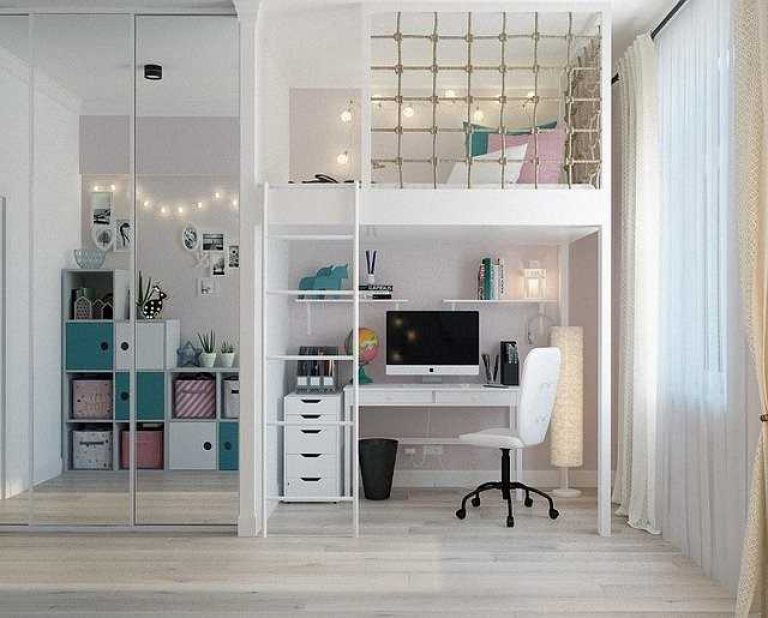Bunk Bed Safety

Are bunk beds safe?
A study was conducted in the United States of America between 1990 – 2005. The study examined bunk bed-related injuries. The study found 572 580 children and adolescents under the age of 21 were treated for injuries during that period—an average of 35,790 per year.
Just over 60% occurred in males. The most common types of injuries were cuts, followed by bruising and abrasions and then fractures. The head and neck were the most injured body parts. Most injuries were attributed to falls (72.5%).
Are bunk beds dangerous?
So, are they dangerous? Well, the study concluded that bunk beds are a common source of injuries for children and teenagers and, given the number of casualties, increased efforts need to be made to prevent injuries occurring in the future. A separate US study 2001 – 2004 also concluded that bunk beds should meet CPSC standards and that young children should not sleep or play on the top bunk or the ladder.
However, it should be noted that many of the accidents that occurred happened in the 0-6 age group and all current guidelines on bunk bed use suggests that no child under the age of six should occupy the top bunk.
It should also be noted that since the study, awareness has grown regarding the correct use of bunk beds and that all bunk beds in the UK need to be manufactured to comply with the British Safety Institution’s safety regulations. So, bunk beds that are made, assembled and used correctly are safer than ever.

What are the bunk bed safety regulations?
In short, all bunk beds sold in the UK need to comply with BS EN 747:2012+A1:2015. These are safety, strength and durability requirements that beds for both domestic and non-domestic use need to achieve. Essentially, these regulations ensure that the beds sold in the UK are safe and fit for purpose – namely, that the beds and ladders should be solidly constructed and that there are no sharp edges and that guard rails/any gaps comply with the British Safety Institution’s safety regulations. This is to ensure that children can’t get stuck or slip between the rail and mattress.
- Bed slats are no more than 7.5 cm apart.
- The upper bunk should have guard rails on both sides with an access gap of 300 mm.
- The access ladder should be firmly fixed to the bed, and the treads should be at least 3 cm wide and 20 cm apart.
- The mattress needs to be at least 10cm below the top of the guard rail. It also needs to fit snugly and securely.
As well as these regulations, The Royal Society for the Prevention of Accidents (ROSPA) also recommend that children under the age of 6 don’t use the top bunk. Children should also be encouraged not to play on bunk beds. They state that most accidents occur when children are playing on them.
It should also be noted ROSPA also suggest that parents should carefully consider whether or not to allow children under the age of 6 to sleep on the bottom bunk as toddlers can become trapped – however, it doesn’t specifically say how they can become trapped.
Bunk bed mattress height
Top bunk beds mattresses are usually thinner. Guard rails should be at least 10cm taller than the mattress. So always remember to maintain a safe height in relation to the guard rails. Most bunk beds can only accept a specific size mattress, so please check manufactures guidelines before purchase.
The minimum age for bunk beds
The minimum age to use the top bunk as recommended by the ROSPA is six years of age.
The maximum age for bunk beds
There is no maximum age for bunk beds. Bunk beds are used by adults all over the world. For example, the army and many hostels have dormitories that are occupied by adults.
The weight limit for the top bunk
Bunks beds are tested to withstand a fair amount of weight. A weight that exceeds the reasonable amount for an average adult. However, if you have any concerns, please contact the bed manufacturer.
Bunk bed safety tips
- Children over the age of 6 only in the top bunk.
- Set some bunk bed rules for your children to follow.
- As discussed, most accidents occur from playing. So, emphasize to your children the dangers of playing on a bunk bed. A bunk bed is not a climbing frame!
- Teach correct usage of the ladder.
- Always ensure the bunk bed, including guard rails, are correctly assembled.
- Consider using a night light. Climbing a ladder in the dark after a night time trip to the loo can be difficult for a child of any age.
- Only one child on the top bunk at a time.
- Placement, don’t place the bed close to light fittings, ceiling fans or against windows. It’s worth remembering that not all ceiling heights are the same, ensure that there is enough room between the bunk and the ceiling to avoid bumps on the head! Your child should be able to sit upright in bed safely.
- Eliminate the risks of strangulation. Don’t tie or allow your child to tie any ropes or string or clothing to the beds.
- Don’t leave a child under the age of 6 alone in a room with a bunk bed.
- Keep the area below the bunk bed and ladder clutter-free.
- Check for product recalls.
FAQ’s
Here are some commonly asked Bunk Bed questions…
Are bunk beds safe for 4 year old’s?
The bunk bed age recommendation is 6. Children under the age of 6 should not use the top bunk. Children under 6 can use the bottom bunk, but babies should always have their own cot. To prevent accidents, children under the age of 6 should also not be left alone in a room with a bunk bed.
Are bunk beds safe for 5 year old’s?
The answer is still no! 6 years and above for the top bunk only.
Do bunk beds collapse?
This is a pretty common fear! However, if the bunk bed adheres to the British Safety Institution’s safety regulations and has been put together correctly, it should not collapse.
Are bunk beds safe for adults?
Yes, as previously mentioned, bunk beds are often used by adults in dormitories.
Conclusion
Bunk beds, loft beds, L shaped bunk beds are a great space saver for homes and in particular for homes with limited space, and children adore them. They are also an ideal solution for siblings sharing a bedroom or handy just for those sleep-overs.
Over the years, manufacturers have improved the safety of bunk beds, and at the same time, bunk bed safety awareness has also greatly improved. So, with the correct assembly and following the safety guidelines for proper usage – and most importantly telling your children the rules to follow – most accidents will be entirely preventable.
If a bunk bed offers a solution for your needs, there is no reason not to purchase a bunk bed today.
Sources
https://www.ncbi.nlm.nih.gov/pubmed/18519473
https://www.ncbi.nlm.nih.gov/pubmed/17446257
https://www.bsigroup.com/en-GB/
https://www.rospa.com/en/Home-Safety/Resources/Policy-Statements/Child-Safety
